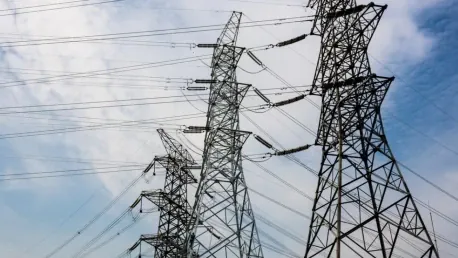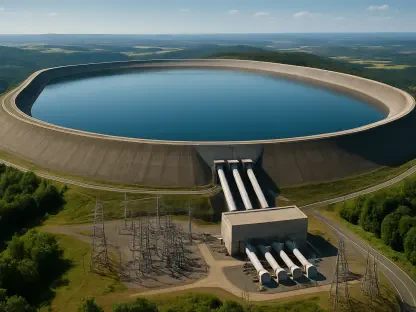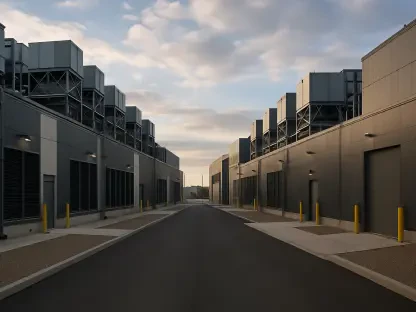Maryland is facing a critical juncture in its energy infrastructure development. With its growing population and surging electricity demands, the state must address its energy needs to ensure reliable power for its residents. The Maryland Piedmont Reliability Project (MPRP) emerges as a key solution to these challenges, promising to enhance the state’s energy infrastructure and support its economic growth.
The Role of PJM Interconnection
Ensuring Reliable Electricity
PJM Interconnection, a nonprofit organization, plays a crucial role in maintaining reliable electricity for Maryland’s six million residents. With a federal mandate, PJM ensures operational efficiency, affordability, and adaptability in alignment with state policy objectives across the 14 jurisdictions it oversees. This responsibility has become increasingly important as the power grid undergoes significant shifts. Traditional electricity-generating resources are exiting the grid due to policy mandates, while demand for electricity is rising. Factors such as the growth of data centers, the adoption of electric vehicles, and efforts to electrify homes contribute further to this increased demand. As older resources retire, they are often replaced by smaller, mainly renewable resources, which have different capabilities and operational dynamics.
Addressing Grid Shifts
The changing dynamics in the power grid not only highlight the changing nature of energy production and consumption but also underscore the urgent need for infrastructure improvements. The increase in electricity demand, driven by policy changes and new technological needs, brings about a unique set of challenges. To address this, Maryland’s energy infrastructure must evolve, incorporating modern solutions that can handle the diverse array of new energy inputs while meeting the consumption demands of advanced technologies. Traditional large-scale plants are being replaced with renewable sources such as wind and solar, which are more sustainable but less consistent. This necessitates robust infrastructure to balance supply and demand effectively and maintain grid stability.
The Need for New Energy Infrastructure
Generation and Transmission
The transition in the power grid underscores the need for new energy infrastructure, including both generation resources and transmission lines. Transmission lines are vital for transporting power from generating stations to consumption areas. They can be localized or part of larger, interstate infrastructures designed to maintain electricity supply reliability. These lines also facilitate the integration of new energy supplies by increasing connection points and mitigating financial burdens on developers. In Maryland, this necessity is particularly pressing as the state imports nearly 40% of its electricity from neighboring states. This level of dependence on outside sources underscores the critical need for a secure and self-sufficient energy network. Improvements in transmission lines not only elevate local grid reliability but also support Maryland’s ambitions of economic growth and renewable energy integration.
Maryland’s Unique Challenges
Maryland’s unique position involves not just importing substantial portions of its energy but also connecting relatively few renewable resources to its grid. This dependency complicates Maryland’s aspirations to grow its economy, inevitably leading to increased power demand. Additionally, compared to its counterparts, Maryland lags in significant transmission infrastructure, which further complicates efficient electricity distribution. To address these challenges, modern infrastructure that can accommodate the state’s specific needs and future growth is crucial. The integration of new, renewable energy sources and the construction of robust, scalable transmission lines have emerged as essential steps in mitigating the state’s infrastructure issues. This infrastructure development will also align with Maryland’s policy imperatives, pushing the state towards a more sustainable energy future.
PJM’s Planning Process
Long-Term Power Needs Assessment
As the regional grid planner, PJM continuously assesses the region’s long-term power needs and identifies when and where new transmission lines are necessary. Last year, PJM hosted eight open transmission planning meetings to address emergent grid reliability concerns in Maryland and neighboring states. These meetings involved Maryland state agencies, private citizens, and other stakeholders, where diverse perspectives and proposals were solicited. This inclusive and collaborative process ensures that all voices are heard and considered when planning future infrastructure projects. Each proposal submitted was meticulously analyzed based on a comprehensive set of criteria.
Evaluating Proposals
Proposals received from transmission developers were rigorously evaluated based on criteria such as impacts to rights of way, overall cost, performance, scalability, constructability, anticipated risks, and project efficiencies. The proposals that best met these criteria were approved to move forward. One notable outcome from PJM’s planning process is the Maryland Piedmont Reliability Project (MPRP), managed by the Public Service Enterprise Group (PSEG). This project stands out for its ability to effectively address grid reliability needs. Furthermore, it is designed to minimize property impact along its route, ensuring that concerns of landowners and other stakeholders are carefully balanced with the project’s goals.
The Maryland Piedmont Reliability Project (MPRP)
Project Overview
The MPRP involves constructing a 70-mile, 500 kV transmission line and has been selected for its strategic ability to address grid reliability needs effectively. It was chosen for its ability to deliver results within a reasonable timeline and cost while minimizing property impact along its route. The project is regarded as critical to ensuring continuous, reliable electricity delivery in Maryland, supporting both current needs and future growth. This infrastructure enhancement will be pivotal in addressing Maryland’s existing challenges while paving the way for more integrated renewable energy sources.
Addressing Concerns
Understandably, landowners along the preferred route and their government representatives have expressed concerns about the potential impacts on their properties. PJM acknowledges these concerns and emphasizes the critical need for this infrastructure to ensure continued reliable electricity delivery. PJM clarifies that it does not take a position on the specific route nor does it have the authority to determine it. PSEG will engage with all impacted property owners, ensuring their concerns are considered throughout the project’s development. Ultimately, the Maryland Public Service Commission will decide whether to grant the required permits for the line’s construction, evaluating all aspects of the project to make an informed decision.
Balancing Needs and Concerns
Importance of Infrastructure
Jason M. Stanek, executive director of governmental services at PJM and former chair of the Maryland Public Service Commission, underscores the dual importance of maintaining reliable electricity delivery and respecting property rights amidst infrastructure development. His commentary captures the urgency for Maryland to embrace enhancements in its energy infrastructure to keep pace with growing demands and policy-driven changes in the energy landscape. He acknowledges that while progress is essential, the process must involve a balanced approach that integrates the needs and rights of all affected parties, ensuring fair and transparent decision-making.
Stakeholder Perspectives
Maryland is at a crucial turning point concerning the development of its energy infrastructure. With a continually growing population and increasing demands for electricity, the state must focus on meeting its energy needs to guarantee a reliable power supply for all its residents. One significant initiative addressing these challenges is the Maryland Piedmont Reliability Project (MPRP). This project aims to bolster the state’s energy infrastructure, ensuring it can sustain the escalating demands. By addressing these pressing concerns, the MPRP not only promises to provide dependable power solutions but also supports Maryland’s economic growth. Reliable energy infrastructure is essential for attracting businesses and fostering economic development, making projects like MPRP vital for Maryland’s future. As electricity consumption rises, investing in robust and efficient energy systems becomes increasingly important. With the MPRP, Maryland is taking a proactive approach to secure its energy future, which can lead to greater economic stability and improved quality of life for its residents.









